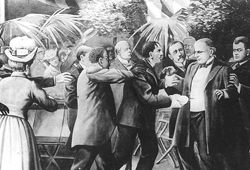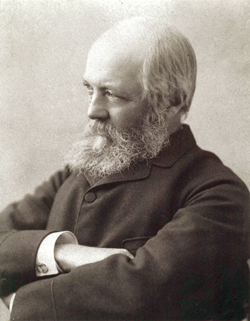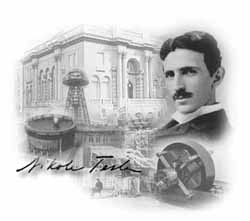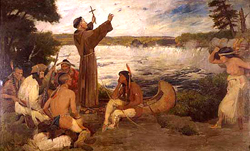12 13 historic events based in Western New York
By Ryan Wolf
Positioned alongside the Great Lakes and the thunderous surge of Niagara Falls, Western New York is a place of sublime beauty and wondrous potential.
Forts, canals, and power plants have all arisen to take advantage of the region’s unique geographic opportunities.
Such a rich location has supplied Western New York with an equally rich past. The following moments in local history are presented chronologically. Their listing is meant to encourage further investigation into the untold ways our area has participated in the unfolding of United States history.
1. The Construction of Fort Niagara – Built by the French in 1726, Fort Niagara endured major sieges during the French & Indian War and the War of 1812. The fort, located in Youngstown, is the oldest consistently occupied military installation in the continent and remains a popular tourist destination.
2. The Burning of Buffalo – During the War of 1812, British troops burned much of the city of Buffalo in retaliation for American forces destroying the town of Newark (later Niagara-on-the-Lake). When Buffalo was razed in 1813 it was a recent settlement, little more than a decade old.
3. The Completion of the Erie Canal – Expanding trade in the United States, the Erie Canal connected the Hudson River near Albany to Lake Erie on the shores of Buffalo. The manmade waterway was completed in 1825 and quickly hailed by many as the “Eighth Wonder of the World.” Boosting transportation speed and lowering costs, the canal also employed an innovative locks system in Lockport capable of raising and lowering boats passing through.
4. A Last Stop on the Underground Railroad – Escaped slaves made their way to freedom in Canada with the aid of brave Western New Yorkers. Stations (safe houses) at the end of the legendary Underground Railroad, for decades, were placed along the Niagara River. Boat crossings launched from Lewiston and Youngstown carried scores to safety throughout the 1800s.
5. The Oldest Coordinated Public Parks System – Frederick Law Olmsted and Calvert Vaux, co-designers of Central Park, also served as designers of the Niagara Reservation and a network of public parks and parkways in the Buffalo region. Their ground-breaking work, the first of its kind in scope, began in 1868.
6. Tesla Designs the First Hydroelectric Power Plant – In 1895, engineering pioneer Nikola Tesla’s revolutionary hydroelectric power plant in Niagara Falls spurred the spread of electric lighting. The Niagara Falls Power Project was an early provider of electricity to Buffalo and New York City. The sole remaining building from the original Tesla-Westinghouse plant can be seen just off of Buffalo Avenue in Niagara Falls.
7. Roswell Park Cancer Institute Founded – When others were unwilling, Dr. Roswell Park of the University at Buffalo courageously sought to understand and treat cancer. His 1898 founding of the very first medical institute devoted to cancer research in the United States led to increased national focus on the disease.
8. Lackawanna Steel Raises the USS Maine – Once a premier source of steel manufacturing, Western New York hosted the famed Bethlehem and Lackawanna steel companies. Their steel mills contributed greatly to American war efforts spanning from the Civil War to World War II. In 1898, Lackawanna Steel planned and implemented a successful strategy to lift the sunken remains of the battleship Maine from Havana Harbor in Cuba. The sinking of the Maine had sparked the start of the Spanish-American War.
9. Pierce-Arrow Automobiles are Manufactured – The 38-year run of the Pierce-Arrow Motor Company began in Buffalo in 1901. The luxury car was a favorite of world leaders, statesmen, and celebrities. Known for its classic advertisements, the Pierce-Arrow obtained a global reputation.
10. The 1901 Pan-American Exposition – In 1901 Buffalo became the hottest spot on Earth. Sponsored by Congress, the World’s Fair was held in the city from May to November. An enormous Electric Tower and a Temple of Music were erected especially for the exposition. Eight million guests came to an awe-inspiring fair that, in part, showcased new inventions including the X-ray and the infant incubator.
11. McKinley’s Assassination, Roosevelt’s Inauguration – While visiting Buffalo’s Pan-American Exposition, President William McKinley was fatally shot by anarchist Leon Czolgosz. Using a bandage to conceal a revolver in his hand, Czolgosz fired on the president during a meet-and-greet in the Temple of Music building. McKinley was shot on September 6, 1901 and died of his wounds on September 14. Immediately afterward, his vice-president, the energetic Theodore “Teddy” Roosevelt, was sworn into office as president on Delaware Avenue in Buffalo. Open to visitors, the inaugural location stands as a national historic site.
12. The Love Canal Incident – From 1920 to 1953 the Hooker Chemical Company used the unfinished Love Canal in Niagara Falls as a dumping ground for hazardous waste. They later, with full disclaimers, sold the area for a dollar to the Niagara Falls Board of Education. After a school was opened on the property, a neighborhood developed around the former dump. Following an extremely high rate of miscarriages, crib deaths, birth defects, and health disorders in the community, the area became subject to intense government and media scrutiny. Over eight hundred families were relocated in 1978.
13. Perhaps the most significant event of all that occurred in our region was the “discovery” of Niagara Falls by the Franciscan monk, Father Louis Hennepin (1626-1705).
An explorer of the interior of North America, Hennepin sailed aboard Le Griffon in 1679 with Robert de La Salle from Canada through the Great Lakes to explore the unknown West.
Niagara Falls was brought to the world's attention by Hennepin in 1683, when he published his book called "A New Discovery" about Niagara Falls.
The book provoked wonder that such a waterfalls might exist that it led to a rush of Europeans coming to see the Falls and it might be said that Hennepin made Niagara Falls the first tourist attraction in the Western World.



